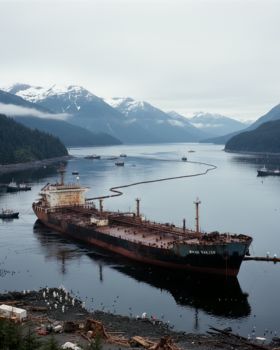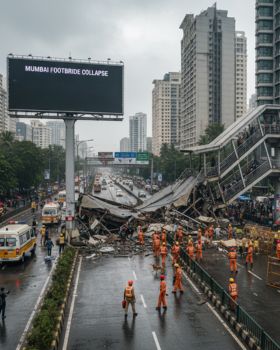
Disclaimer:
This article is intended for informational and educational purposes only. It is based on publicly available information related to the Mecca crane collapse of 2015 and is not meant to attribute blame or liability to any individual, organization, or entity. The content aims to highlight lessons in construction safety and the potential role of modern contractor management systems in mitigating risk. While examples and case studies are discussed to provide context, they are not presented as definitive analyses or investigations. Readers are encouraged to consult official reports and expert sources for a comprehensive understanding of the incident. SHEQ Network does not claim any involvement in or association with the incident described.
On September 11, 2015, a tragic crane collapse occurred at the Grand Mosque in Mecca, Saudi Arabia, during significant expansion work aimed at accommodating the growing number of worshippers. The accident, later identified as being caused by strong winds and severe weather, resulted in the deaths of 111 people and injuries to more than 390 others. Known widely as the Mecca Crane Collapse, the incident remains one of the most devastating crane-related accidents in modern history.
The Mecca crane collapse 2015 was not just a single-point failure; it highlighted a combination of challenges, including adverse weather conditions, large-scale construction activities, and the complexity of managing a project of such magnitude. It also raised critical questions about construction site safety and the management of contractors working in high-risk environments.
Overview of the Mecca Crane Accident
At the time, several cranes were installed around the Grand Mosque as part of a major expansion project. One of these cranes—a crawler crane—collapsed due to severe wind gusts and thunderstorms. This Mecca crane accident occurred just days before the annual Hajj pilgrimage, a period when the mosque receives millions of visitors from around the world.
Official investigations later confirmed that the crane was technically positioned correctly but had not been adequately secured against strong winds. This combination of unexpected weather and site preparation gaps led to a tragic loss of life.
The Importance of Safety Oversight
The Mecca crane collapse 2015 became a global talking point for construction safety experts. It emphasized the importance of monitoring environmental risks and ensuring that heavy equipment is safely secured at all times, especially in areas where public movement is constant and large gatherings are expected.
While the accident itself was a complex event influenced by multiple factors, it encouraged many organizations to re-evaluate how they manage contractors, equipment, and safety processes on large construction sites.
Could Contractor Management Systems Have Helped?
The Mecca crane accident is often studied as a case where improvements in oversight and planning could have helped reduce risk. A contractor management system can provide structure, organization, and oversight to ensure that all contractors working on-site follow documented safety processes, especially in dynamic environments.
Though such digital systems were not widely adopted at the time of the Mecca crane collapse 2015, modern solutions today offer features that could help prevent or minimize similar incidents.
A contractor management system can:
- Facilitate proper documentation of safety checks.
- Ensure that all contractors are qualified and trained.
- Help track weather-related risks and issue timely alerts.
- Provide organized records for inspections and equipment maintenance.
- Improve visibility into who is on-site and what tasks are being performed.
It is important to note that while technology cannot completely eliminate risks, these systems could help strengthen safety frameworks and improve response times in changing conditions.
Lessons Learned from the Mecca Crane Collapse
The Mecca crane collapse continues to offer valuable lessons for construction companies, safety professionals, and project managers worldwide.
- Weather Awareness is Essential
Understanding weather patterns and their potential impact on construction equipment is vital. Strong winds can quickly destabilize cranes if they are not properly secured.
- Site Safety Must Be Prioritized
Large construction sites, especially those in public spaces, require stringent safety protocols. Ensuring that equipment is locked down when not in use and that safety checks are completed regularly is critical.
- Coordination Among Contractors
When multiple contractors are involved, the need for coordinated management becomes even more essential. Clear communication and oversight across all teams help prevent gaps in safety practices.
- Documentation and Accountability
Properly maintained records of safety inspections, contractor qualifications, and equipment maintenance can provide a clear line of accountability and support proactive safety planning.
The Value of Modern Contractor Management Solution
After reflecting on incidents like the Mecca crane accident, many organizations now look for tools that can support safer work environments. Contractor management solutions are designed to improve safety processes, enhance visibility across contractor activities, and promote regulatory compliance.
A contractor management solution could help ensure that:
- Contractors are certified and approved before entering the worksite.
- Safety documents are digitally stored and easily accessible.
- Regular safety briefings and inductions are conducted and recorded.
- Real-time updates can be shared in the event of changing weather or site conditions.
While no system can guarantee the complete avoidance of incidents, having structured processes in place could help reduce risk and strengthen safety culture across worksites.
Conclusion: Could Contractor Management Systems Help Improve Construction Safety?
The Mecca crane collapse 2015 was a deeply tragic event that has since led the construction industry to place greater emphasis on safety, planning, and contractor oversight. Modern tools like contractor management system and contractor management solutions can now play an important role in supporting these efforts.
By offering a centralized platform for managing contractor documentation, safety records, and communication, these systems could help organizations strengthen their safety practices. They can also improve coordination and ensure that the right people, processes, and protocols are in place at the right time.
It is essential to understand that while technology supports better management, it does not replace the human responsibility for making safety a top priority. Software solutions are valuable aids that could help improve awareness, accountability, and preparedness, but they are part of a broader safety culture that organizations must foster.
If you are considering enhancing your contractor safety processes, a contractor management solution could provide the structure and support your organization needs to manage complex projects more safely and efficiently.
🔗 Learn more at sheqnetwork.com and transform the way you manage contractor safety today.
👉 Ready to see it in action? Book your free demo here!
Ready to transform? Contact us today at info@sheqnetwork.com or call us at +353 21 4536034 for a personalized demo!



